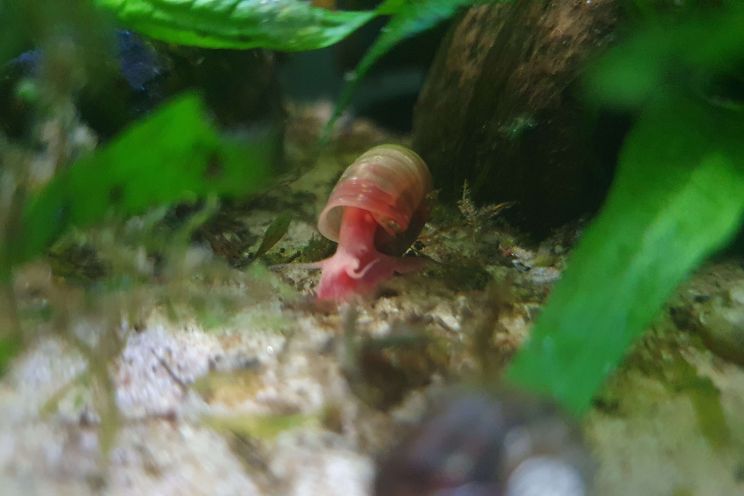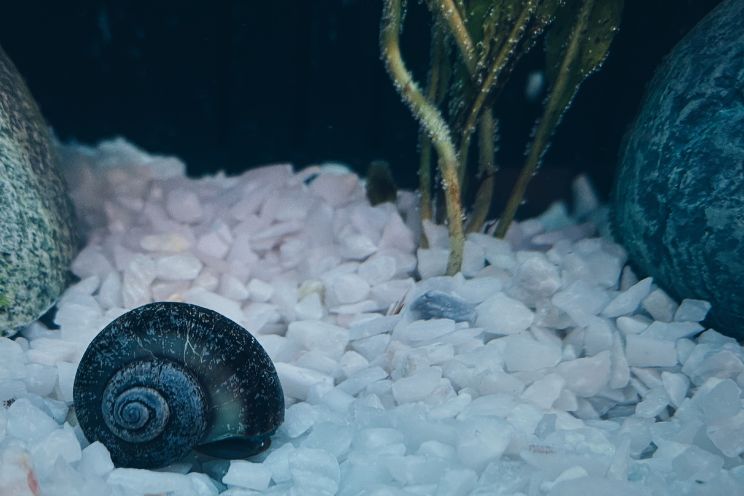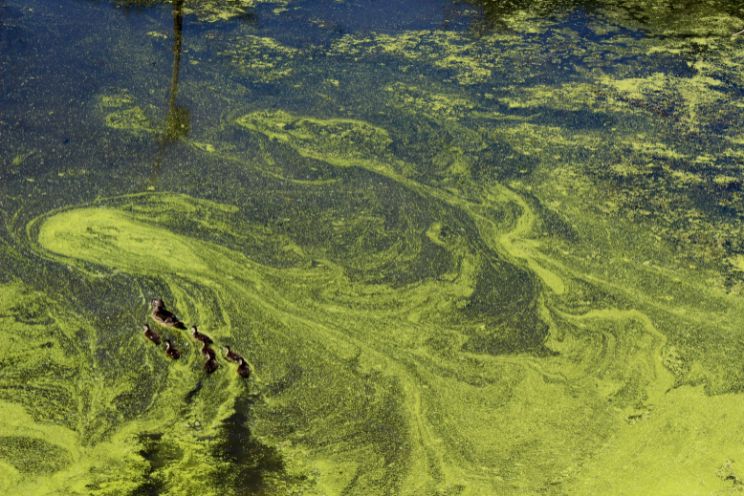You may have been recommended by someone to add pond snails to your pond; you may have heard from others that they are bad and are vermin.
But what are pond snails, are they good or bad, why would you want to keep them, and in what ways can you benefit from keeping them?
What are pond snails?
“Pond snail” is a loose term for any freshwater snail species that can live outdoors in a pond.
It includes hundreds of species, but the most common species referred to as a pond snail is Lymnaea Stagnalis.
They are a gastropod like any other snail, having soft fleshy skin housed within a tough calcium carbonate shell they carry around on their backs.
They are detrivores, eating dead or decaying organic matter and are found all over the world.

Are pond snails good or bad for your pond?
Snails are excellent for your pond – they are a form of cleanup crew and will do you a massive favour in maintaining your aquatic ecosystem.
They are pure scavengers, meaning they will search around and scoop up any leftover bits of food and organic debris they come across.
Snails will also eat algae and prevent it from clogging filters, emulsifying plants and overtaking your pond.
They break down organic material into a form that is much easier from bacteria and plants to utilise, aiding in the filtration of your pond.
Snail faeces and waste is excellent food for infusoria and other microfauna like shrimps and scuds.
And snails also help to maintain the hardness level of your pond, preventing minerals from building up too much.
We highly recommend snails if you do not keep them already.
Types of pond snails
There are a few types of pond snails. Some common types of pond snails in the UK, Europe and US include:
- Dwarf Pond Snail
- Ramshorn Pond Snail
- Wandering Pond Snail
- Great Pond Snail
- Big Ear Pond Snail
What do pond snails need to survive?
Pond snails like all animals, need food, and clean water. Snails in particular also need a presence of calcium in the water to maintain their shell, so we recommend regularly buffering your water with a KH or GH powder every so often if you have snails, to replenish this calcium.
Snails mostly eat algae and uneaten fish food, but if you really want your snails to do well, then you should feed them extra.
Try them on sinking pellets, green beans, algae wafers and any other sinking foods.

How many snails do I need for my pond?
This is entirely subjective, but nature will probably figure this out for you. In short, all animals will breed to the amount of food available to them.
If you feed your fish a lot, and there is uneaten food, waste, algae and loads of potential snail food, then you will have lots of snails.
If you have 500 snails in your pond, then it is likely because you need 500 snails to help cope with the amount of biological waste entering the pond.
With this, the amount of snails you have is a good indicator for the success of your pond maintenance skills.
If you have thousands of snails, then maybe it is time to cut back on the amount you feed your fish.
If you then feed less, then some snails will die off, and the population will reduce, along with their food, keeping the ecosystem in your pond perfectly balanced.

Pond Snails: Natural Habitat and Origins
There are thousands of different species of freshwater and brackish pond snails all over the world.
Lymnaea stagnalis is the species people are often referring to when they say “pond snail.”
These snails are found in ponds, lakes, rivers and canals all throughout Europe, north america and some parts of asia.
Snails are very ancient animals, and their origins are some 500 million years ago, starting as a very simple ocean dwelling mollusc.
This means snails have had a very long time to adapt to all kinds of environments, and so they have become very adaptable, hardy creatures, being able to survive in a range of aquatic and non – aquatic ecosystems.
Pond snails in particular are very hardy and able to withstand drastic temperature changes, harsh weather events and food shortages.
However, while pond snails seem like near enough bomb proof animals, they still cannot live in poor quality, ammonia ridden water, and still need food to survive, like all animals.
Can pond snails live out of water?
No, pond snails will only survive between a couple of hours and potentially a couple of days out of water. They will dry out if not kept consistently wet.
Pond snail appearance
The most common type of pond snail is the species Lymnaea Stagnalis – they are usually grey, bronze or gold in colour, get to about 2” in size and are the shape of a tear droplet.
Pond Snail vs Bladder Snail
They are very similar in appearance to the common bladder snail, which is a cousin of the pond snail and is often confused with it.
Bladder snails however, are much smaller, have a different shaped and patterned shell, being less pointed and having gold speckles and are much much smaller than an adult pond snail.
Bladder snails also belong to a different genus of air breathing freshwater snails called Physella.
Pond snails also typically have dark black, brown or blue skin. This is because like many snails pond snails have blue blood, which gives them a darker skin colour.

Pond snail behaviour and temperament
Snails are peaceful animals, they live amongst rocks, wood and plants that are submerged within a pond, searching for leftover food, detritus and dead animals and plants which they can clean up.
They are natures vacuum cleaners, they want nothing to do with you or your fish, and like to live their own quiet life scavenging for food.
They will not harm your fish or other tank inhabitants, aside from the fact that some snails may eat unhatched fish eggs.
The lifespan of pond snail
Pond snails will typically live for around 18 months, though you can however, get some that live 5 years or more and grow very large, but this is an abnormality, and most snails don’t survive past their 2nd or 3rd year.

How to look after pond snails
Pond snails are very easy to care for. Keep them how you would keep any aquarium or pond pet, feed them regularly and keep on top of water quality with water changes.
Snails in particular however, like many other aquatic invertebrates, do need a level of calcium in the water, to prevent their shells from dissolving.
This can be done by buffering the hardness of the water with either an aquarium buffer KH or GH, or by using bicarbonate of soda.
We recommend using a hardness test on the water to keep track of this, along with a pH test, as there is a line between buffering too much or too little.
The water test kits will help you better understand this.
You want to achieve a moderate – high level of hardness, and keep your pH above 7.0, pond snails as mentioned, are very hardy and can put up with a wide range of parameters, but they need calcium in order to grow and survive.
Feeding pond snails
What does a pond snail eat?
Good things to feed to pond snails are:
- Algae wafers
- Green beans (canned)
- Spirulina
- Fish flakes or pellets
- Boiled cabbage
- Kale
- Spinach
- Lettuce
- Frozen peas
- Frozen bloodworms
Snails will eat pretty much anything that sinks and is dead, but some foods are better than others in terms of providing nutrients and producing levels of toxic ammonia – the ones we have listed here are all good sources of food which produce small levels of ammonia.
If you decide to feed your snails these foods, and they don’t eat it all, make sure you remove any uneaten scraps after a few hours, so that it doesn’t rot and produce an ammonia spike.
Do pond snails eat algae and pond plants?
Snails will eat some types of algae, particularly filamentous algae or diatoms, but there are some algaes they cannot digest, such as blackbeard, blue-green or blanketweed.
You may also see your snails eating plants, but we can assure you that no snail will eat a healthy, strong plant.
Many aquatic snails that are often considered pests, like pond snails, cannot digest a healthy plant, they will only eat dead or dying plants, or plants which are very stressed.
If you find that your plants are being eaten by pond snails, then you should observe the health of your plant. Check for:
- Discolouration in the leaves
- Are you fertilising the pond?
- Are you buffering the water?
Try these things to help promote the health of your plants.
Snails which do eat plants are ironically, the ones which people want to keep as pets, such as mystery snails, apple snails and any of the operculum snails.
These guys will eat healthy plants and are very good at destroying vegetation (which is why they are illegal to transport in some countries or states).
The typical pond snail however, will not eat healthy plants.

How often should you feed pond snails?
When you have snails in your pond, you need to change the mindset of feeding your pond to instead of just feeding the fish, you are now feeding an ecosystem.
So bear in mind how well the populations of snails are doing and how much food is left over – if you feed your pond plenty of sinking foods, and there is plenty left over for them to feed on, you wont need to feed your pond extra to specifically target the snails.
If you have lots of competitive fish in a large pond however, and decide you want to feed the snail population more, then feed green beans, algae wafers and catfish pellets once or twice a week, just to give them those added nutrients.

Breeding pond snails
Pond snails will breed in a puddle – they are very successful animals and are very prolific breeders. If you have snails, they will breed.
However, what is unique about the pond snail is that instead of being a hermaphrodite like most snails, they have separate male and female sexes.
So unlike many other snails where any two can breed, you need a mix of male and female.
Pond snails arent easy to sex either, so if you plan to breed them, get a couple to ensure you get a mix.
Keep your water quality clean, feed them well and provide calcium and your snails will mate. Once mated, the female will then lay slimy egg sacks and stick them on plant leaves and surfaces all over the pond, from which will emerge hundreds of snail babies.
The eggs and babies are eaten by goldfish, so if you want to keep many of them alive, take the eggs out and raise them in a separate pond or tank.
When they grow to be large enough, (which won’t take long), reintroduce them.
Best plants for pond snails
Any plants will work well with pond snails, but not all aquarium plants do well in ponds, so here are some we recommend for colder ponds.
These are plants which will survive through winter and grow well in pretty much any setup.
Easy pond plants:
- Variegated reed
- Barred horsetail
- Aponogeton
- Lily pad
- Iris
- Elodea densa
- Bacopa
Common freshwater pond snails
As previously stated, the term pond snail describes an array of freshwater snail species, some of which you can keep outside in cold temperatures, some can only survive in temperatures above 20 C and some are illegal to keep in certain areas.
Here are some of the most common “pond snails” which can survive in temperate ponds around the world:
- Stagnalis (great pond snail)
- Bladder snail
- Ramshorn snail
- Flat ramshorn snail
- Japanese trapdoor snail
- Big eared pond snail
- Dwarf pond snail
- Wandering pond snail
How to remove pond snails
If you want to remove pond snails because you are overrun with them or simply do not like them, then there are ways to do this, but it is not an easy task.
We have a full guide on snails and how to remove them.
In this article, we discuss in further details the methods you can use to remove snails from your pond or tank, along with their varying levels of effectiveness and the pros and cons to each strategy.

Very good and informative article. I learned a lot and it was very well written for ease of understanding. I’m getting a couple of Stagnalis this year. Thank you!
Thank you for your comment Angie,
I love pond snails, glad I can part some of my knowledge about them and help others understand how great they are.
I have a small plastic box that I keep snails I picked up last August at a RV site. They have not grown any bigger than 1/2″ dia. I started with two and now I have 12. The smaller snails appeared all at once and were very small. Similar to a pepper corn. One of the original two snails has died the others are going strong. I feed them grass and carrot shavings. They really like the carrot shaving. Their poop is orange and is a half circle shape. I use tap water that I leave open for a few days to expel any gases. A few small rocks to attach. Very interesting animals to watch.
I was wondering how they handle temperature extremes.
Here in Central Texas we’ve had the usual stinking hot days and the occasional freeze.
As a result I am not sure what I’d get for our fountain/pond
This explained a lot and answered the questions I was trying to find. Thanks.